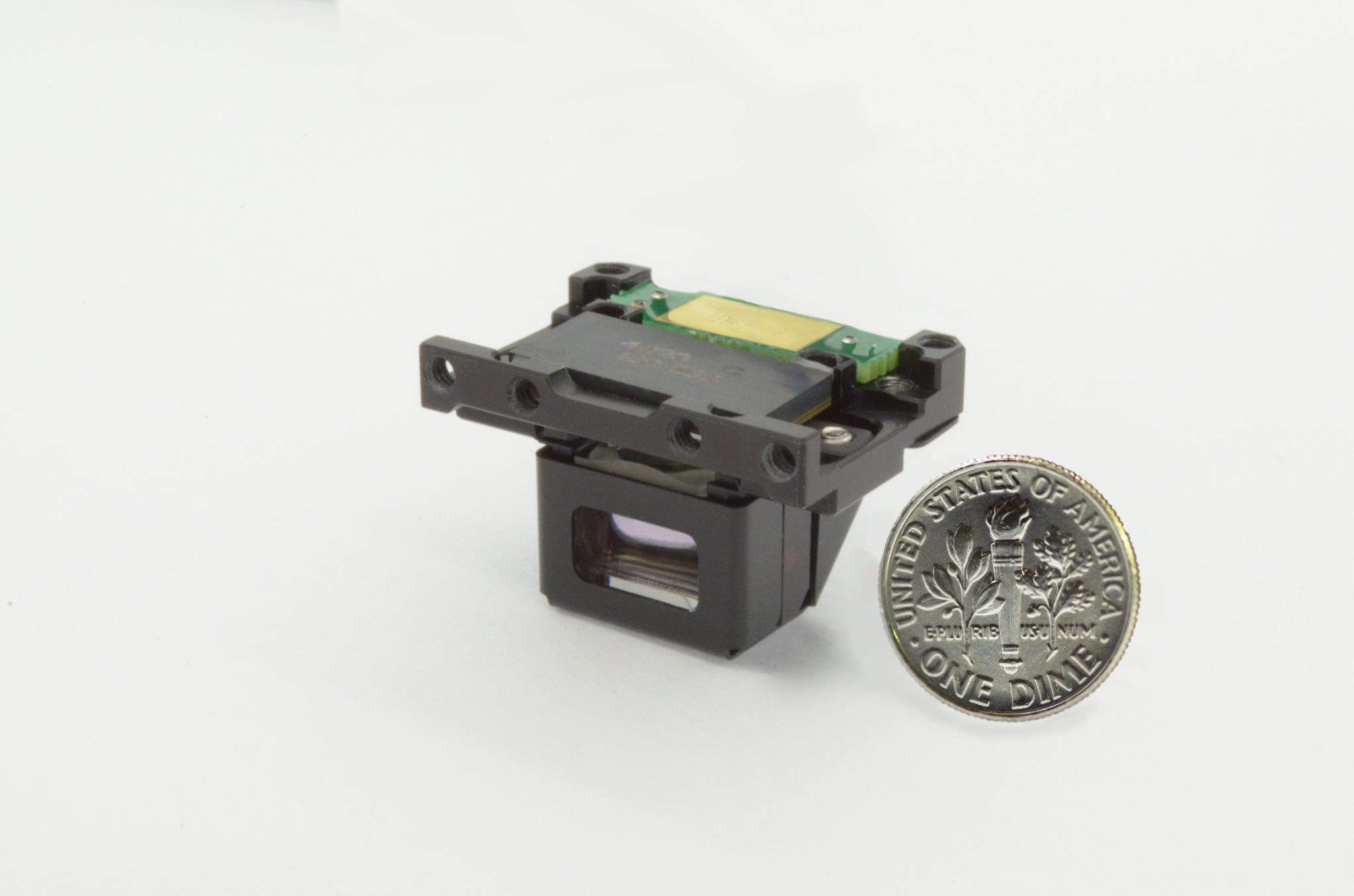
In Augmented Reality and Mixed Reality News
April 17, 2020 – Compound Photonics US Corporation, a provider of compact high-resolution microdisplay solutions for augmented reality (AR) and mixed reality (MR) applications, has introduced an ultra-compact, high brightness 1080p optical engine reference design that the company states fits into a volume under 3 cubic centimeters (3cc).
Specifically optimized for Compound Photonics’ 0.26” diagonal, 1920 x 1080 resolution, 3.015μm pixel, all-in-one Integrated Display Module (IDM) package, the optical engine design enables system designers to develop AR/MR smart glasses that deliver naturalistic visual experiences in more ergonomic form factors approaching regular consumer eyewear, according to the company. Furthermore, Compound Photonics added that prototype demonstration units have shown up to 2x brightness vs. other engine designs when projected into the new generation of 50°+ wide field of view (WFOV) waveguides.
“Since size of the display drives the overall optical engine volume, this engine can be up to 2x smaller than those built around similar resolution displays at larger pixel sizes,” commented Edmund Passon, Co-CEO at Compound Photonics. “The combination of Compound Photonics’ high-reflectance LCoS display operating at >90% duty cycle and a new optical architecture, delivers needed brightness improvement over previous designs to reduce power consumption, while simultaneously illuminating a larger field of view and eyebox along with providing improved image quality and resolution required to take full advantage of these new to market WFOV waveguides.”
The company’s IDM package (7.25 x 15.5 x 3.4 mm) is a complete display subsystem (including driver ASIC and passive components) with MIPI input that can be flexibly configured for a range of integration needs. It also incorporates Compound Photonics NOVA display driver architecture for customizable, frame-by-frame control of refresh rate (up to 240 Hz), color sub-frame rate, and other parameters to optimize for low latency, short persistence and low power according to type of image content and use case.
Andrew Shih, Compound Photonics’ Marketing and Business Development Manager, added, “With the release of this reference design, system integrators, ODMs, and OEMs will have a tested and validated high-performance full optical/display subsystem solution that simplifies integration of pre-qualified microdisplay, optical engine and waveguide combinations into consumer AR glasses, thereby reducing development effort and accelerating time-to-market. Customers can now focus on their core competencies – industrial design, software integration, systems integration, and manufacturing – to develop attractive, compelling, and high-performance AR/MR devices for consumer and industrial end-markets.”
Compound Photonics is currently scheduling demos for its new engine and the company states that its reference design will be available for customers to license.
Image credit: Compound Photonics
About the author
Sam is the Founder and Managing Editor of Auganix. With a background in research and report writing, he has been covering XR industry news for the past seven years.
